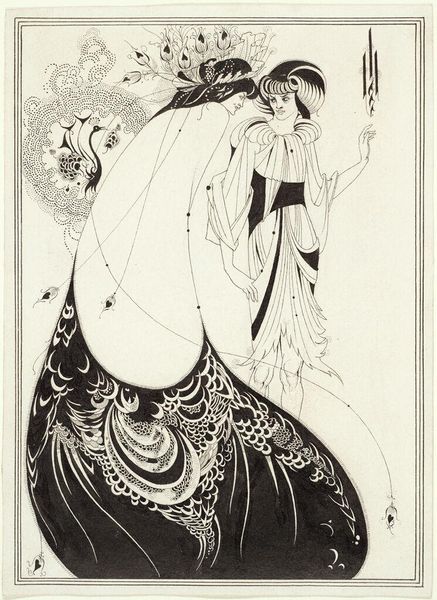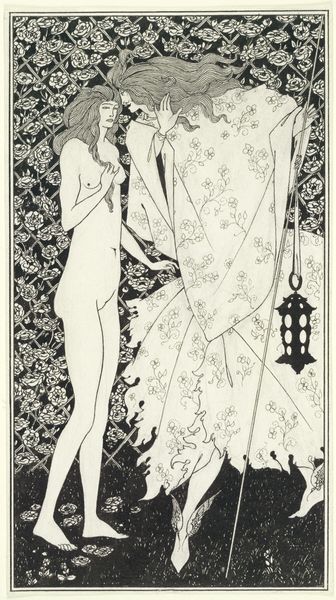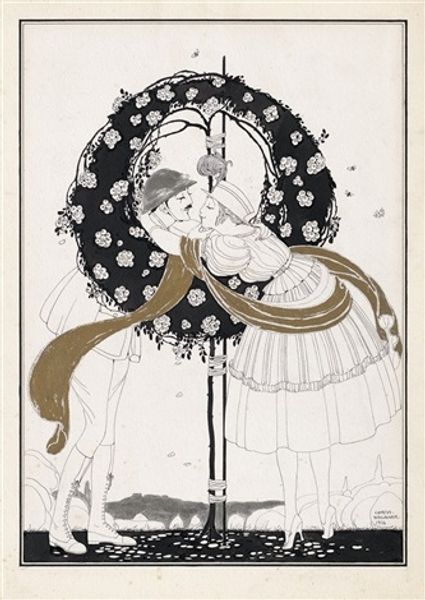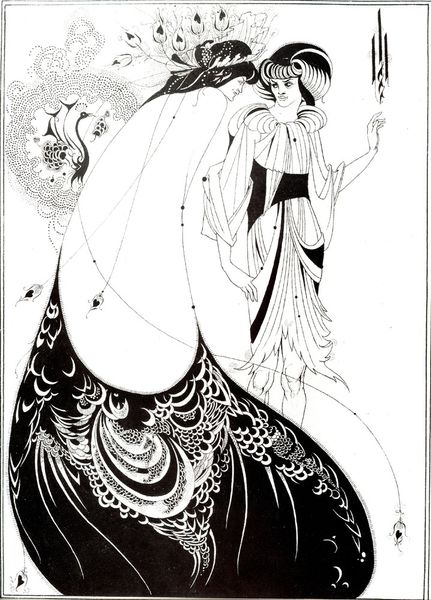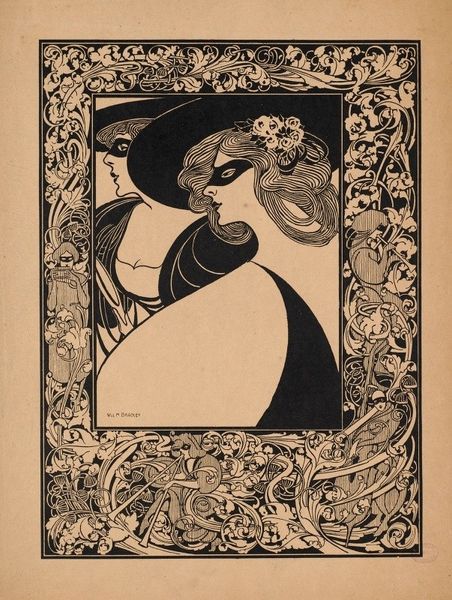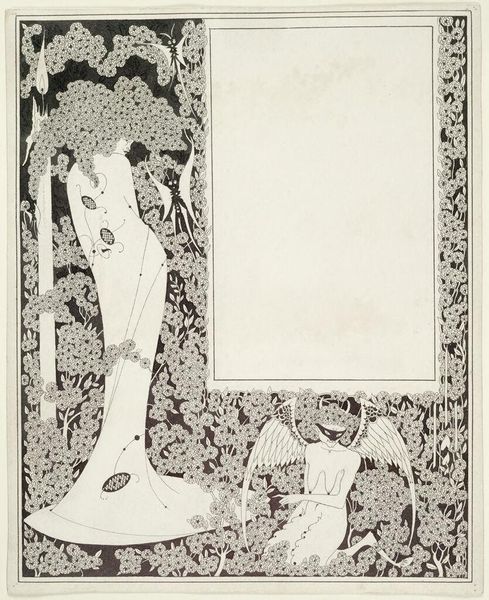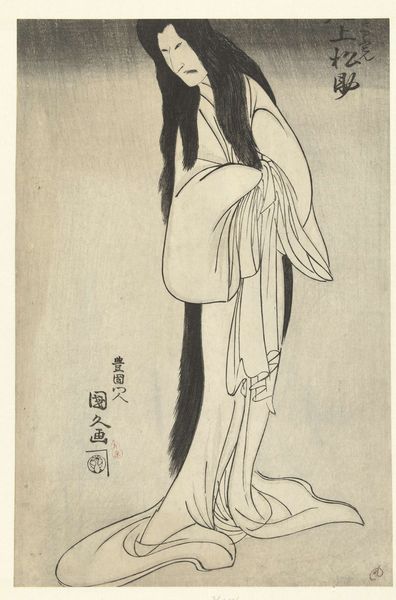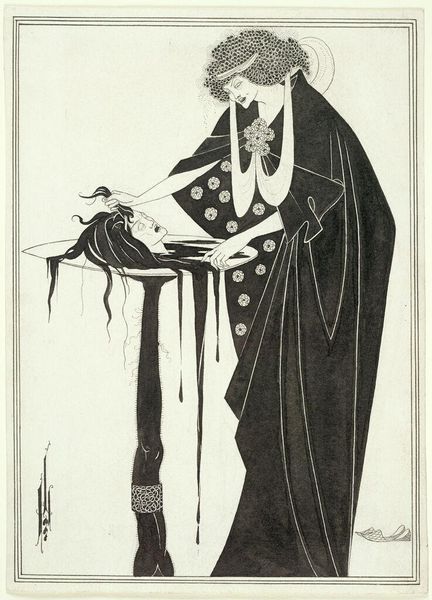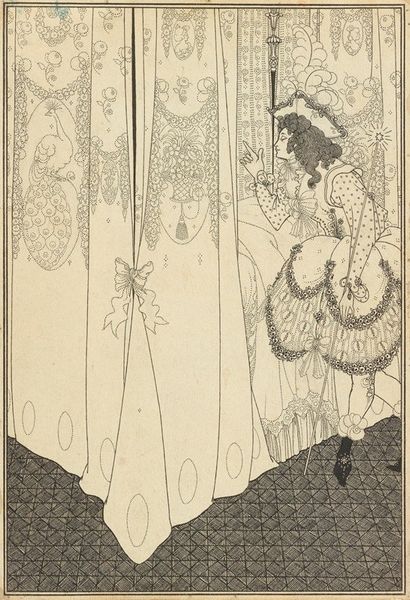
drawing, ink, pen
#
drawing
#
art-nouveau
#
narrative-art
#
pen drawing
#
pen illustration
#
figuration
#
ink line art
#
ink
#
line
#
symbolism
#
pen
#
erotic-art
Copyright: Public Domain: Artvee
Editor: Here we have Aubrey Beardsley's ink drawing, "Virgilius the Sorcerer," from around 1893. The stark black and white creates a very dramatic effect, almost theatrical. How do you interpret the imagery here? Curator: The potency of Beardsley's imagery lies in its web of historical echoes. Look at Virgilius: isn't he a caricature of learned power? Consider the weight of Virgil’s literary authority, then Beardsley punctures that balloon. His rendition drips with the exoticism and the decadence that became central to the Art Nouveau movement. Editor: So you’re saying the image is more than just a portrait, that it’s challenging established ideas? Curator: Precisely! Notice how the floral motifs interwoven within the dark robes simultaneously represent beauty and decay, life and death. They're not mere decoration. They symbolize the ephemeral nature of existence, perhaps commenting on the transient nature of fame, beauty and even power. What does his raised hand suggest to you? Editor: I initially thought he was casting a spell. But maybe it's a gesture of dismissal? Like he's rejecting something? Curator: Interesting! Consider that the sorcerer also presents an open book to the viewer. Could the spell that he's weaving actually be a presentation of art? And what do we, the viewer, bring to that spell? Editor: Wow, I never thought about it that way. So Beardsley isn’t just depicting a sorcerer; he’s prompting us to think about what imagery does, what its purpose is, what meaning it brings to our lives. Curator: Indeed! This image encapsulates the shifting cultural landscape of the late 19th century. Beardsley presents us with an image of Virgil the Sorcerer that continues to cast its spell, prompting introspection to this day.
Comments
No comments
Be the first to comment and join the conversation on the ultimate creative platform.
